- JST Home
- /
- Strategic Basic Research Programs
- /
 PRESTO
PRESTO- /
- project/
- Development and application of intelligent measurement-analysis methods through coalition between measurement technologies and informatics/
- [Intelligent Measurement Analysis] Year Started : 2018
[Intelligent Measurement Analysis] Year Started : 2018
Ryo Ishikawa
Three-dimensional electron microscopy via automated geometric aberration correction
Researcher
Ryo Ishikawa
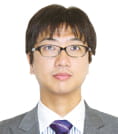
Project Associate Professor
Institute of Engineering Innovation
The University of Tokyo
Outline
To fully understand material’s properties, it is important to examine the atomic structure of the material in three dimensions. One prospective approach is optical depth sectioning, where we use a large illumination angle in scanning transmission electron microscopy. However, the atomic resolution image with such large illumination angles is quite sensitive to small amount of residual geometric lens aberrations. In this research, we will explore an optimum descriptor for respective geometric aberrations to automatically minimize residual aberrations, especially in lower orders. To elucidate three-dimensional atomic structures from experimental image-data-set via optical depth sectioning, we also develop image analysis tools including Bayesian estimator, denoise algorithm and multivariable analysis.
Kenichi Kato
Development and Application of the Visualization System of Inhomogeneous Phenomena based on Data-Driven Total Scattering Measurements
Researcher
Kenichi Kato

Senior Research Scientist
SPring-8 Center
RIKEN
Outline
Based on synchrotron total scattering measurements with the data-driven correction, I will develop the visualization system of inhomogeneous phenomena using the information theory, which yields atomic pair distribution function with a 0.1 Å resolution covering interatomic distances above 100 Å. The system will be applied to hydrogen-storage materials, leading to the visualization of hydrogen distribution. Such average structure information of individual nanoparticles could fill the observation gap between individual structure information obtained by imaging and whole information by diffraction.
Takuya Sakamoto
Noncontact radar imaging of a human body using advanced array processing based on a mathematical model of vital signs
Researcher
Takuya Sakamoto
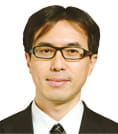
Associate Professor
Graduate School of Engineering
Kyoto University
Outline
In this research, I develop a high-resolution radar imaging technique of human skin displacement for realizing noncontact measurement of a pulse wave generated by the mechanical activity of the human heart. For this purpose, I develop a signal processing technique for blind separation of echo signals from multiple body parts by combining antenna array processing and a mathematical model of vital signs, such as respiration and the heartbeat. I then realize high-resolution imaging of the pulse wave propagating through the arterial tree of the target person.
Yasunari Tamai
Novel spectral decomposition methods based on sparse modeling and genetic algorithm
Researcher
Yasunari Tamai

Assistant Professor
Graduate School of Engineering
Kyoto University
Outline
Due to broad absorption and photoluminescence spectra of soft matters such as conjugated polymers, an observed spectrum is usually a superposition of those broad spectra. This makes it significantly difficult or often impossible to analyze the messy data. This research aims to develop novel spectral decomposition methods based on sparse modeling, genetic algorithm, and Bayesian inference, which enables us to analyze complicated data obtained by ultrafast spectroscopy.
Terumasa Tokunaga
Establishment of machine learning-based dynamical morphing techniques for elucidating principles of neurotransmission
Researcher
Terumasa Tokunaga

Associate Professor
Graduate School of Computer Science and Systems Engineering
Kyushu Institute of Technology
Outline
The understanding of working principles of the nervous system in a cellular level is a fundamental issue for both neuroscience and intelligence information science. This research is intended to establish a learning-based dynamic morphing technique for estimating denser spatio-temporal features of central neurotransmissions beyond the limits of a high-speed 4D Calcium imaging system. The proposed technique comprises several distinct steps. The first is the non-rigid image alignment that relies on a kernel density estimation of digital images and Bayesian inferences. This is for correcting rapid movements or free-form deformations of target cells. In the subsequent steps, 3D images with different resolutions are integrated based on supervised/self-supervised machine learning techniques, including Generative Adversarial Networks.
Haruka Nishikawa
Development of a farmed fish monitoring system by using fish finder and simulation
Researcher
Haruka Nishikawa
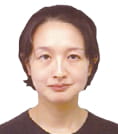
Researcher
Research Institute for Value-Added-Information Generation
Japan Agency for Marine-Earth Science and Technology
Outline
The aim of this research is developing a farmed fish monitoring system for knowing the fish number and weight in tanks. The system consists of observation by fish finder and simulation for fish behavior.
Kumiko Hayashi
Image analysis of axonal transport based on non-equilibrium statistical mechanics toward medical application
Researcher
Kumiko Hayashi

Associate Professor
Graduate School of Engineering
Tohoku University
Outline
Axonal transport is a parcel delivery system of neurons, which functions like highways in human society. Motor proteins (carriers) deliver cargo packed with many kinds of materials required for neural activity. Because deficits in the cargo delivery causes neuronal diseases, such as Alzheimer’s, Parkinson’s or Huntington’s disease, it is significant to understand the molecular mechanism of the axonal transport for super-aging society. In this study, non-equilibrium statistical mechanics, which has been used to understand electron transport and heat transport, is applied to axonal transport. By analyzing the microscope images of axonal transport based on non-equilibrium statistical mechanics, physical quantities such as force, velocity and motor number involved in axonal transport is estimated.
Kotaro Hiramatsu
functional Raman spectroscopy for measurement in arbitrary spectral dimensions
Researcher
Kotaro Hiramatsu

Research Associate
Graduate School of Science
The University of Tokyo
Outline
This research aims at the development of functional Raman (fRaman) spectroscopy, which enables us to experimentally access spectral dimensions that are strongly correlated with biological functions. With fRaman spectroscopy, we will be able to significantly enhance the acquisition speed without sacrificing the amount of the information about the biological functions by designing the input optical pulse shape so that it interrogates only the desired Raman spectroscopic dimensions. As a proof of principle, I will perform rapid discrimination of cancer tissues and cells from benign tumors with fRaman microscopy and fRaman flow cytometry.
Satomi Matsuoka
Visualization of intracellular self-organization processes by single-particle simulation aided by data assimilation
Researcher
Satomi Matsuoka
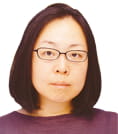
Assistant Professor
Graduate School of Frontier Biosciences
Osaka University
Outline
Various vital functions require spatiotemporally ordered dynamics of molecules in living cells. Such a self-organizing process underlies cellular basal motility under spatially uniform environments, which can be achieved through spontaneous symmetry breaking to generate an anterior-posterior polarity within the cell. One of the molecules central to the polarity is a phosphatidylinositol lipid that exhibits traveling waves propagating along the cell membrane. In order to clarify the self-organization mechanism, I will tackle with visualization of the traveling waves at single-molecule resolution based on single-particle simulation aided by data assimilation. The mechanism elucidated at the molecular level will provide an insight into how the cellular function arises from individually stochastic molecules.
Yu Matsuda
High precision measurement technique based on compressed sensing for aerodynamic testing
Researcher
Yu Matsuda
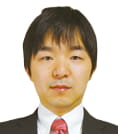
Associate Professor
Faculty of Science and Engineering
Waseda University
Outline
The pressure-sensitive paint (PSP) technique has received much attention, as it enables us to diagnose complex flow fields with high spatial resolution. However, the application of PSP is limited to flows with large pressure variation such as aircraft because the pressure resolution of PSP is low. In this study, the PSP technique with higher pressure resolution will be developed based on the structured illumination and the compressed sensing technique to contribute the reduction of aerodynamic drag and aerodynamic noise of automobiles and railway vehicles.
Kunihiro Morishima
Muon tomography by the connection between an advanced computer science and the measurement technology of subatomic particles
Researcher
Kunihiro Morishima
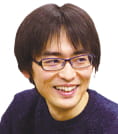
Associate professor
Graduate Schcol of Science
Nagoya University
Outline
This research is the development of an innovative muon tomography by connection between an advanced computer science and the technology which is based on two generic technologies : an analog technology “nuclear emulsion” and a hardware technology “high-speed automated read-out system based on optical microscope”.













